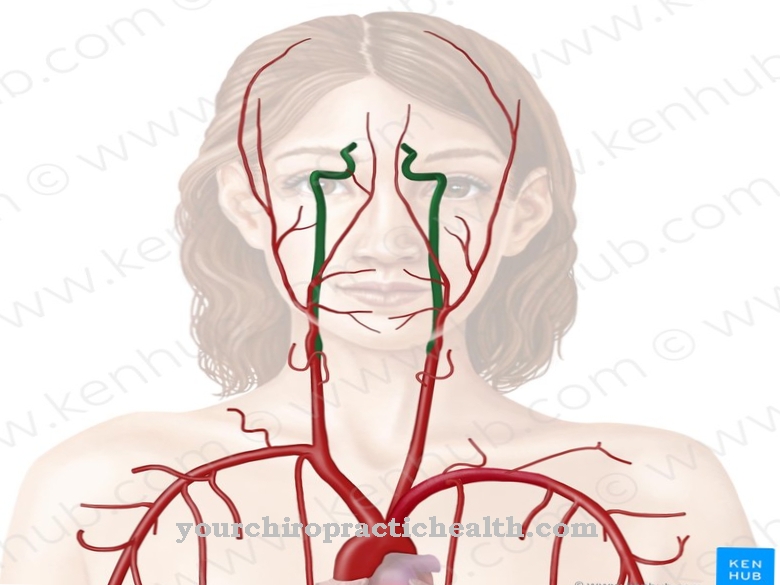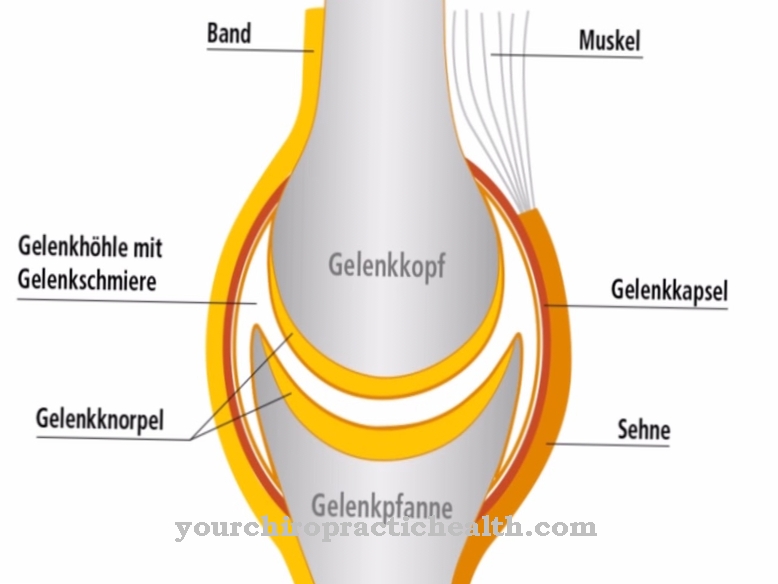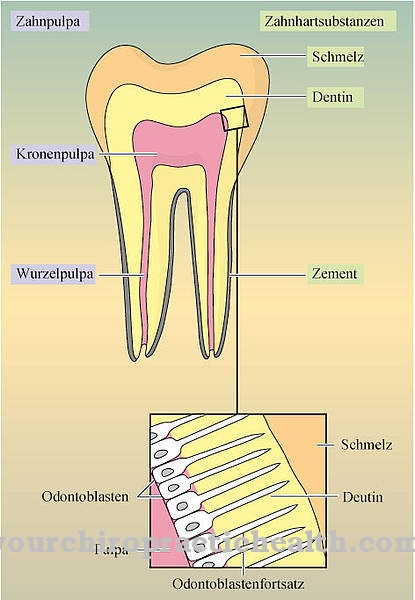The Respiratory center is the part of the brain that controls both inhalation and exhalation. It lies in the elongated spinal cord (medulla oblongata) and consists of four subunits. Malfunctions of the respiratory center can u. a. occur as a result of neurological diseases, lesions and poisoning or are associated with other diseases.
What is the respiratory center?
The respiratory center is a functional unit in the brain that is located in the elongated spinal cord (medulla oblongata). Because of its enormous importance, doctors originally referred to the breathing center as Life knot (Nodus vitalis). Its job is to control breathing, which is essentially involuntary; However, humans are able to consciously control inhalation and exhalation - to a certain extent.
In 1811, the French doctor and physiologist Julien Jean Legallois was the first to describe this part of the brain. Like many brain functions, the respiratory center was discovered by comparing healthy and damaged tissue. Legallois found, through animal studies, that lesions in a specific area of the elongated spinal cord lead to inhibition of involuntary breathing.
Anatomy & structure
The respiratory center is located in the elongated spinal cord and does not represent a uniform anatomical structure. Instead, it is a functional unit made up of different nerve cells. These belong to different groups, but are closely linked to one another via synapses.
Medicine distinguishes four subgroups: the dorsal respiratory group, the ventral respiratory group, the pneumotactic center and the apneustic center. Different units represent different functions and tasks. The dorsal respiratory group extends longitudinally through the elongated spinal cord, with most of the nerve cells in the solitary tract. This group is a network without a fixed boundary.
The ventral respiratory group surrounds the dorsal respiratory group laterally and in the direction of the chest; However, these are also not clearly delimitable structures. Both the pneumotactic center and the apneustic center are located in the bridge (pons): the latter is in the lower part, whereas the pneumotactic center is located above it.
Function & tasks
Involuntary inhalation and exhalation depend on the respiratory center; Functionally, there are four steps in the breathing process. The different groups of nerve cells within the respiratory center only exercise certain functions. The dorsal respiratory group is largely responsible for the rhythm of breathing. The inhalation takes around two seconds and is shorter than the exhalation, which takes around 3 seconds.
For inspiration, the dorsal respiratory group sends signals to the breathing muscles, which then actively enable inhalation. The breathing center does not need to generate its own signal for passive exhalation. In contrast to this, the ventral respiratory group of the breathing center is necessary for forced breathing, which can accelerate or force both inhalation and exhalation. The pneumotactic center in the pons controls a part of the breathing process that many people are not consciously aware of: it stops inhalation and thus helps control the maximum volume of air in the lungs.
Medicine describes the counterpart to this process as apneusis: The apneustic center of the respiratory center induces short, violent inhalations like gasps. In this way, after holding your breath for a long time, exerting yourself or in other stressful situations, apneusis helps ensure the oxygen supply to the body.
You can find your medication here
➔ Medication for shortness of breath and lung problemsDiseases
One of the best-known breathing disorders is hyperventilation, in which those affected breathe in and out quickly. As a result, symptoms such as dizziness, visual disturbances, feelings of suffocation, panic sensation and cardiovascular complaints can occur.
Hyperventilation can occur in the context of physical as well as psychological complaints, whereby the physical causes include, among other things, an acutely increased oxygen demand and diseases such as stroke (apoplexy), traumatic brain injury, brain inflammation (encephalitis) and other incidents in the cerebrum. Hyperventilation as a psychological symptom is particularly characteristic of panic and anxiety attacks. Patients with depression or pain disorders are also more prone to hyperventilation than other people.
Gasping (dyspnea) is a severe breathing disorder that can be fatal if left untreated and is characterized by a reduced number of breaths, with people taking in little air into the lungs per breath. Dyspnea often occurs naturally before death and can pathologically precede complete cessation of breathing. Breathing stops completely when breathing stops, but it may start again; The decisive factor is above all the specific cause. In addition to neurological diseases, possible causes of respiratory failure include poisoning, paralysis of the respiratory muscles, certain external influences such as choking, medical trauma, electrical accidents and anesthetic complications.
Temporary cessation of breathing for at least 10 seconds during sleep characterizes sleep apnea or sleep apnea syndrome. Other potential symptoms include restless sleep, increased sweating at night, increased need to urinate during sleep (nocturia), difficulty sleeping through the night, and microsleep attacks. You may experience dizziness and headache after waking up. In addition, sleep apnea often manifests itself in signs that affect mental performance, such as concentration problems and a depressed mood.
Drug use, obesity (obesity), and neural disorders are some of the most common causes. Treatment differs depending on the cause, but is urgently needed, especially in severe cases, to prevent physical damage caused by a lack of oxygen. Other breathing disorders are breathing sounds (stridor), pulling breathing, periodic breathing, mouth breathing, hiccups (singultus) and sneezing.
















.jpg)
.jpg)



.jpg)






